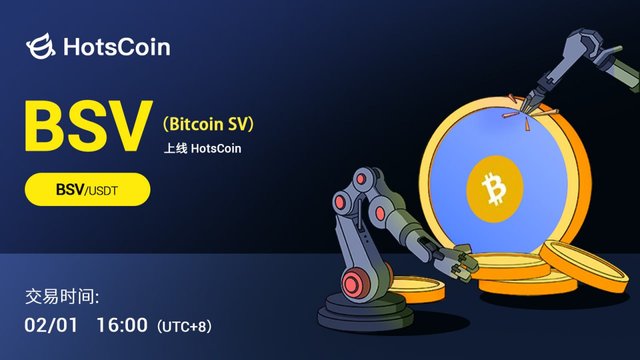
SV (Bitcoin SV) has been listed on HotsCoin on February 1st. Bitcoin SV (BSV) is a hard fork of Bitcoin Cash (BCH). Its core concept regards cheap peer-to-peer transactions as the core value of the network and is committed to improving Block size and on-chain transaction throughput. BSV is currently open for trading on HotsCoin.
I. Overview
Bitcoin SV (BSV) is a hard fork of Bitcoin Cash (BCH). Its core philosophy regards cheap peer-to-peer transactions as the core value of the network and strives to increase block size and on-chain transaction throughput. As of now, the circulating supply of BSV is 19,622,556.25 BSV, and the total supply is also 19,622,556.25 BSV. Its circulating market value has reached $1,348,788,725.796, which is the same as the fully diluted market value.
Historical background
Development of Bitcoin SV
Bitcoin was maintained by a small community of developers and cryptography enthusiasts in its early days, but as Bitcoin became more popular, the network began to face transaction load issues. Bitcoin Cash (BCH) was the first fork to attempt to solve Bitcoin's scalability issues, with its main motivation being to increase the number of transactions per second by increasing the block size. However, supporters of BSV believed that BCH's scalability features were insufficient to meet the needs of Bitcoin and decided to return to the original Bitcoin design.Bitcoin SV ideology
Supporters of BSV believe that the original Bitcoin protocol has flaws, and modifications to the protocol (such as SegWit, Lightning Network, etc.) pose a threat to the stability and effectiveness of the protocol. They argue that the only acceptable way to improve scalability is to increase the block size.Technical structure
Block size and transaction speed
The default block size of the BSV protocol is 128MB. After the Quasar protocol upgrade, the block size was expanded to 2GB. The protocol allows for adjustable block sizes determined by the network’s consensus mechanism, and miners can choose the block size they want to mine. BSV is designed to increase transaction speeds, attracting miners to offset reduced block rewards with more transaction fees.Blockchain historical storage and decentralization
Although large blocks increase transaction speed, fewer full nodes are able to store the entire blockchain history due to increased memory requirements. This raises concerns about decentralization, as more nodes can join and maintain the network.Controversies and Challenges
While BSV’s philosophy and technical structure appealed to a portion of the community, its founder Craig White’s self-declaration as Satoshi Nakamoto sparked widespread controversy. The lack of concrete evidence casts doubt on his claims. Additionally, BSV needs to address the balance between large blocks and decentralization to ensure long-term viability.Conclusion and outlook
BSV is committed to delivering a highly scalable and regulatory-friendly protocol that strives for mainstream confidence. However, it remains to be seen whether it can remain viable in the long term. BSV’s development path may affect the blockchain industry’s view on the trade-off between transaction speed and decentralization.